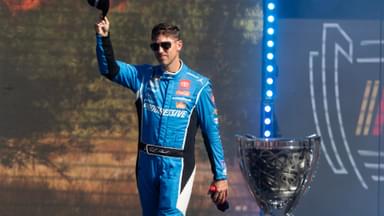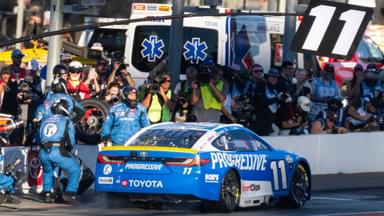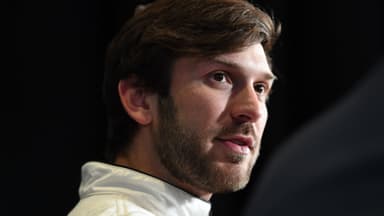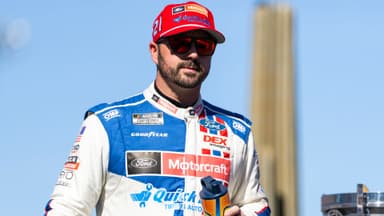Kyle Petty and Todd Gordon have the solution to make NASCAR bigger and more popular, and it boils down to just two words: “road courses.”
Advertisement
That’s right, the two NASCAR analysts believe the best way for the sport to expand beyond its current fan base is for the sanctioning body to focus on road course and street course races in the upcoming Cup schedules.
That doesn’t exactly mean add more road/street races, but rather move them around to new markets to attract new fans, much like NASCAR did the last three years with the Chicago Street Race, or this year with the road course race in Mexico City.
Petty and Gordon’s argument is sound. Look at some of the biggest non-stock car racing series in the world, and what do they all have in common? Road courses, that’s what.
Road courses are what’s made Formula One so popular. The same goes for IndyCar’s increasing popularity in the U.S. (and also thanks to a great TV contract with FOX Sports). Across the Pacific Ocean, there is the Australian V8 Supercars series.
With NASCAR having designs on eventually taking the Cup Series to international venues, it has to bring a type of product that fans in other countries are familiar with, and that’s road course racing. A perfect example of that was earlier this year when NASCAR held its first Cup race in Mexico at the Autodromos Hermanos Rodriguez, a 2.429-mile road course.
Even though NASCAR does have its own racing series south of the border—actually, two: NASCAR Mexico and further south, NASCAR Brazil—Mexican racing fans may not have necessarily known all that much about Cup racing, but they did know about how stock cars in the NASCAR Mexico series race: on road courses.
Why Petty, Gordon Feel Road/Street Races Are Key to Expansion
Earlier this week, on the NASCAR After the Race podcast. Petty referenced the NASCAR Fan Council, an advisory group of fans who give their opinions to NASCAR leaders on what they believe fans like and don’t like in the sport. And right at the top of the Fan Council’s list is road courses: whether there should be more, less, or maintain the current status quo.
“(Fans) screamed for it and now you’re screaming, we don’t want them,” Petty said. “I don’t know. We are an oval series. Our roots are as an oval series. It’s in the short tracks of America, the dirt tracks of America. NASCAR’s roots are not in the road courses of America.”
But just like driving on a road course, Petty then turned right after initially turning left, in his opinion.
“I think what road courses do for us is it allows us to bring in world-class racers like Shane (van Gisbergen), like Juan Pablo (Montoya), like so many other guys who have come from different formulas to participate and show their skills. And it’s allowed our drivers to show those skills against those (foreign drivers).
“(NASCAR is) more well-rounded from a road course to a half mile, to a three-quarter mile, to a mile track, to a mile and a half, to a two-mile asphalt, to a two and a half mile superspeedway.
“Nobody races on that type of different tracks, the different (non-NASCAR) disciplines. I think we have some of the greatest drivers in the world. I’ll say it until the day I die. The most well-rounded, the most versatile, that can go anywhere, anytime, and drive anything against anybody. And we’ve seen it all through the history of our sport.”
Even though he earlier said he didn’t know how many road course races NASCAR should hold in a season, Petty then said, “three or four a year, or four or five a year, and that’s it. Remember, we’re 36 races, so there’s room for road courses here.”
Gordon then gave his two cents. His ideal number of road course races in a season is five. But at the same time, if NASCAR is going to continue to expand, particularly internationally, it has to come to terms with the likelihood that races overseas will only be on road or street courses.
“Really, we’re not building new racing venues throughout the country,” Gordon said. “So, if we want to go and find a new population to go put something on, if we want to go get back into Southern California, we’re going to have to do a street course. We have to be aware of what we’re accomplishing by doing this.”
Gordon referenced when the Xfinity Series raced on the Circuit Gilles Villeneuve (CGV) road course in Montreal, Canada. NASCAR is reportedly considering a Cup race there, with options of racing either at CGV or another oval at Canadian Tire Motorsports Park (an hour east of Toronto), or perhaps street races in Vancouver or Edmonton.
And if NASCAR fully intends to go overseas, well, options are further limited. “You’re not going to find oval tracks overseas and in different places,” Gordon said. “There’s just not ovals that we can go to.”
Ergo, if NASCAR is to expand, it boils down to what some people love and what others consider two dirty words: road courses.








